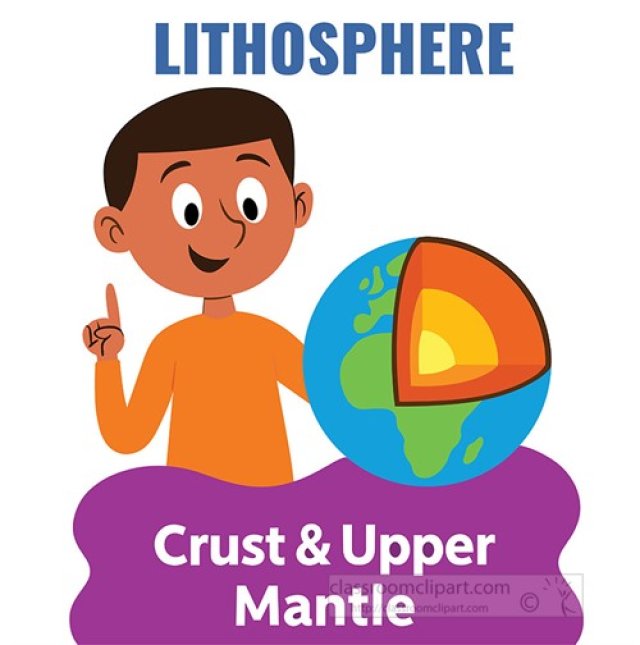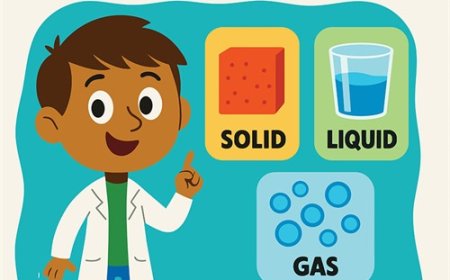Lithosphere Explained for Students | Earth Science Guide
Learn about the lithosphere the rigid outer shell of Earth made of the crust and upper mantle that forms continents oceans mountains and earthquakes

🌟 Introduction
The lithosphere is Earth's strong, outer shell. It includes the crust, which we live on, and the uppermost part of the mantle beneath it. Together, these layers form a rigid surface that is broken into huge slabs called tectonic plates. These plates float slowly on top of the softer layer below, called the asthenosphere. The lithosphere is responsible for many of Earth's surface features, including mountains, volcanoes, and ocean basins. It also plays a key role in earthquakes and plate tectonics, making it one of the most important layers of our planet to understand.
🔍 What is the Lithosphere?
The lithosphere is the rigid, outermost layer of Earth. It is made of:
-
Crust: Earth's thin outer layer (continental crust under land and oceanic crust under oceans).
-
Upper Mantle: The top part of the mantle that is solid and strong.
The lithosphere is divided into tectonic plates, which move slowly and interact at boundaries.
🌍 Why is the Lithosphere Important?
-
Plate Tectonics: The lithosphere's plates explain how continents move and why earthquakes happen.
-
Mountains and Volcanoes: Collisions and movement in the lithosphere shape Earth's surface.
-
Resources: Rocks and minerals we use every day come from the lithosphere.
-
Habitability: The lithosphere provides land for humans, plants, and animals to live on.
🧪 Everyday Examples
-
Earthquakes occur when stress builds up and is released along breaks in the lithosphere called faults.
-
Volcanoes erupt when molten rock pushes through cracks in the lithosphere.
-
The Himalayas formed because the Indian Plate is pushing into the Eurasian Plate, both part of the lithosphere.
-
Everyday items like granite countertops, salt, and metals all come from rocks and minerals within the lithosphere.
✨ Fun Facts
-
The lithosphere averages about 100 kilometers thick.
-
Oceanic lithosphere is thinner and denser than continental lithosphere.
-
Without the lithosphere's rigid plates, Earth would not have continents or oceans.
-
Scientists study earthquakes to learn more about the lithosphere's structure.
📌 Key Takeaways
-
The lithosphere is Earth's outer rigid layer, made of crust and upper mantle.
-
It is broken into tectonic plates that move slowly.
-
The lithosphere is responsible for mountains, volcanoes, and earthquakes.
-
Life depends on the lithosphere for land, resources, and stability.
🐾 Kid-Friendly Summary
The lithosphere is Earth's hard outer shell. It's like a cracked eggshell made of plates that move slowly and create mountains, earthquakes, and volcanoes.
📚 Vocabulary Words
-
Lithosphere: Earth's rigid outer layer of crust and upper mantle.
-
Crust: The thin rocky surface layer of Earth.
-
Mantle: The thick layer of hot rock beneath Earth's crust.
-
Asthenosphere: The softer layer beneath the lithosphere where plates move.
-
Tectonic Plates: Huge slabs of lithosphere that move slowly.
-
Fault: A crack in the lithosphere where earthquakes occur.
-
Oceanic Crust: The part of the crust under oceans.
-
Continental Crust: The part of the crust under continents.
-
Plate Boundary: The edges where plates meet.
-
Subduction Zone: Where one plate sinks under another.
🧠 Interactive Quiz on Lithosphere
- The lithosphere is made of
A. Crust and outer core
B. Crust and upper mantle
C. Mantle and inner core
D. Only crust - The lithosphere is broken into
A. Continents
B. Volcanoes
C. Tectonic plates
D. Mountains - Which is thinner and denser?
A. Oceanic lithosphere
B. Continental lithosphere
C. Inner core
D. Outer core - Earthquakes happen when
A. The Sun heats the air
B. Stress is released along faults in the lithosphere
C. Rain falls on rocks
D. Rivers cut valleys - The lithosphere provides
A. Land, minerals, and resources
B. Light and heat
C. Clouds and storms
D. Air and water


















































